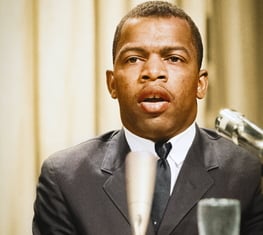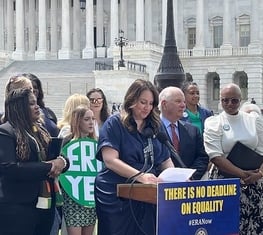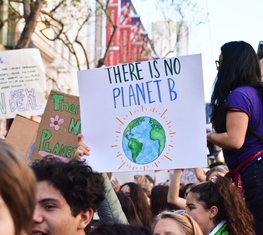We've Voted: What Happens Next in the Electoral College?
Election Day has come and gone, votes have been cast, and the final votes are being counted. This year, millions chose to cast ballots by mail, or took advantage of the early voting in their area, and even registered at the polls on Election Day. Now that every envelope has been sealed, ballots have been delivered, boxes have been bubbled, and “I Voted” stickers have been collected, what happens next? Life after the election seemed to be lightyears ahead last week, and even today it feels like a fever dream.
There is going to be a lot taking place over the next few days as ballots are counted and we must be patient and let the democratic process take place. Part of this process will be counting how many Electoral College votes each candidate gets as states tally up individual popular vote numbers. The Electoral College has been a part of our democratic process since the start, but what does it really do and what can we expect this year?
Here is what you should know about the Electoral College in the next couple of days:
1. The Electoral College was created out of "compromise"
The Electoral College is a constitutional process established by the founding fathers in Article II, Section 1 of the U.S. Constitution. In the process, a group of presidential electors from each state are appointed and come together every four years to elect the President of the United States. It consists of 538 total members and electors are apportioned according to the number of congressional seats of each state (two Senators plus the number of House members).
The Electoral College was created as a “compromise” created through the 12th Amendment of the Constitution to elect the President through a system of electors rather than the popular vote to address fears small states (think Connecticut, Rhode Island, and Delaware) had about larger states deciding the outcome of the election. The rationale behind it goes much deeper and is shrouded in racist ideas surrounding the three-fifths compromise and slavery.
On election night, as people cast individual ballots, those votes are then counted, and state popular vote totals are used to distribute Electoral College votes to the candidates. The candidate that reaches 270 votes is the winner.
2. Every state has its own set of rules around the Electoral College
On election night, you're probably familiar with watching TV and seeing the various maps show states across the country turning blue or red. The rules around the Electoral College are not always uniform. This applies to how electoral votes are distributed and rules that bind electors in the state. In Nebraska and Maine, for example, electors are split by congressional district. In these states, the winner of the popular vote in the state gets two electoral college votes, and then one vote is assigned to the winner of each congressional district. For the most part, states follow a "winner takes all" system where the winner of the popular vote wins all the Electoral College votes. Additionally, states’ electors are bound by different rules as well.
Get involved in elections in your area and join one of the 700+ state and local Leagues.
State governments mandate rules for electors and how they should vote. In 32 states, electors are legally bound to vote for their states’ popular vote winner in the Electoral College. An elector who diverges from their rules and casts a vote for the candidate they are not pledged to is known as a "faithless elector". Faithless electors are rather rare and have not made enough of an impact to change the outcome of an election.
3. Electors meet on the "first Monday following the second Wednesday of December" to cast their official votes
The electors meet and cast separate votes on paper ballots for president and vice president. Following this, the results are delivered to the President of the US Senate, and then on January 6, 2021, the 117th Congress will count and officially announce the results in a joint session. While these procedures are not as well known to the public, they are a constitutionally mandated process that happens every four years. In the event of an Electoral College tie or uncertainty, Congress, specifically the House of Representatives, will cast votes to select the new President and Vice President.
The Electoral College process will not be complete in a day or week. It will take time for states to count all ballots and finalize the numbers. Electors will then meet, certify their votes as electors, and deliver them to Congress. We must understand how thorough this process is and where it comes from. Being informed beyond Election Day can be a source of empowerment for many folks across the country and provide clarity and understanding. Whether you're a voter, an electoral organizer, or are looking to be more informed on election night, a strong understanding of the electoral college is a good way to start.
Sign Up For Email
Keep up with the League. Receive emails to your inbox!
Donate to support our work
to empower voters and defend democracy.






